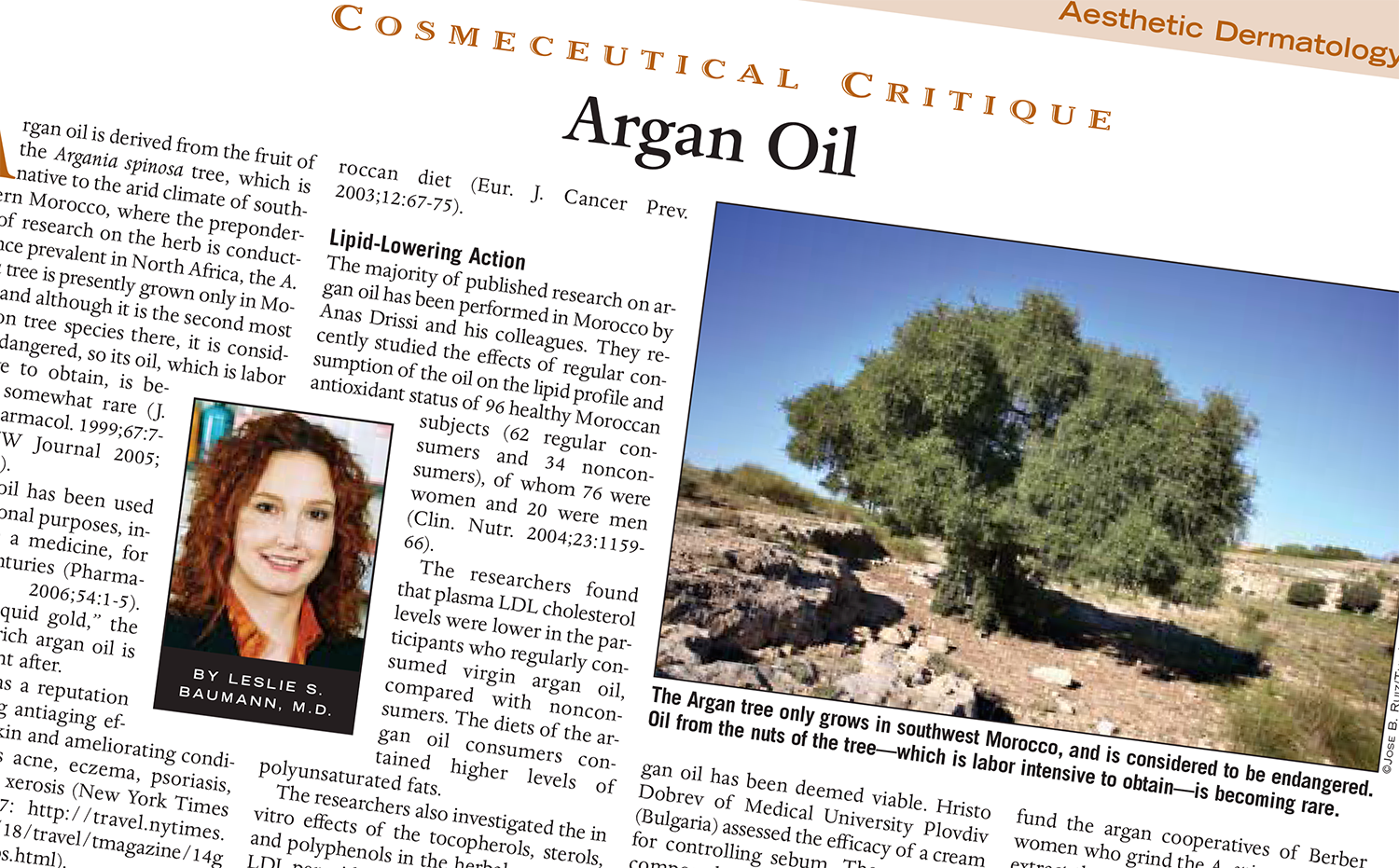
Author: Leslie S. Baumann
Argan oil is derived from the fruit of the Argania spinosa tree, which is native to the arid climate of southwestern Morocco, where the preponderance of research on the herb is conducted. Once prevalent in North Africa, the A. spinosa tree is presently grown only in Morocco, and although it is the second most common tree species there, it is considered endangered, so its oil, which is labor intensive to obtain, is becoming somewhat rare (J. Ethnopharmacol. 1999;67:7–14; SÖFW Journal 2005; 131:35–46).
Argan oil has been used for traditional purposes, including as a medicine, for several centuries (Pharmacol. Res. 2006;54:1–5). Dubbed “liquid gold,” the vitamin E-rich argan oil is highly sought after.
There is a paucity of research on this botanical compound, but the preponderance of recent investigations has focused on the cardiovascular benefits of virgin argan oil consumption. Specifically, antiatherogenic, cholesterol-lowering, antiproliferative, and antioxidant benefits have been observed (Ann. Nutr. Metab. 2005;49:196–201; Nutr. Metab. Cardiovasc. Dis. 2005;15:352–60; Evid. Based Complement. Alternat. Med. 2006;3:317–27; Cancer Invest. 2006;24:588–92; Cancer Detect. Prev. 2007;31:64–9).
Given argan oil’s abundant supply of fatty acids, phenolic constituents, squalene, sterols, and tocopherols, it is also thought to be an important factor in enhancing the anticancer effects of the Moroccan diet (Eur. J. Cancer Prev. 2003;12:67–75).
Continue reading Cosmeceutical Critique: Argan Oil




